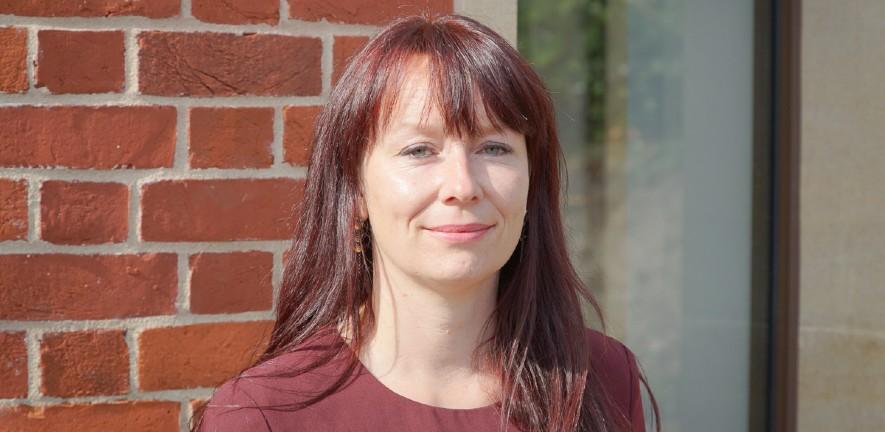
Submitted by Jane Durkin on Mon, 07/11/2022 - 12:24
Esther-Miriam Wagner is the Executive Director of the Woolf Institute and an Affiliate Lecturer at the Faculty of Asian and Middle Eastern Studies, University of Cambridge.
Her main research interests include the Cairo Genizah, Judaeo-Arabic, historical linguistics of Arabic and Yiddish, sociolinguistics, scribal practise, and Jewish-Muslim relations in Egypt and Muslim Spain as reflected in the Genizah sources.
Miriam is also the Vice-President of the Society for the Medieval Mediterranean, and the Editor-in-chief of the prestigious journal Al-Masāq.
Her work has been featured on TV and Radio programmes, such as on BBC3 The Essay, in History Magazine and in documentaries on the Cairo Genizah.
Miriam will be presenting ‘Defining boundaries and creating commonalities: the case of Jewish Arabic’ at the Cambridge Language Sciences Annual Symposium on 24 November 2022 as part of a research dialogue on 'Language, culture and identity: perspectives from historical linguistics and sociolinguistics’ with Laura Wright and Daniel Weston.
My research sets out to explain in the broader sense how language shapes identity, how community boundaries are being drawn through the use of language and how particular language register can be created to bring people of different communities together through other of forms of identity. More narrowly, I am interested in the interplay between high and low registers of Arabic, mainly in Jewish and Christian communities, in order to express sociolinguistic circumstances.
Being the Director of an Institute does not leave me as much time for research as I would like, but when I work, I have the privilege to turn to the manuscripts of the Cairo Genizah – the majority of which are housed in Cambridge University Library. The manuscripts are digitised, so much of the work can be conveniently done on the screen, but it is always a special delight to study manuscripts in the original. They tend to speak to you in quite metaphysical ways, revealing their secrets as you touch them.
In terms of my sociolinguistics research, a highlight has been the production of several edited works coming out of interdisciplinary conferences I organised, on scribes as agents of language change, the role of traders in the vernacularisation of languages, and Ottoman Arabic. I am also a proud member of the Historical Sociolinguistics Network (HiSoN). This has led to engagement as a teacher in the HiSoN summer school in Lesbos and as a keynote speaker at some historical sociolinguistics conferences. I was also selected as a speaker at the Hay Festival, talking about language and identity, which was a fantastic experience.
My most recent book is an edited reader of Ottoman Arabic, which I hope will facilitate teaching of post-medieval Arabic in universities. I am presently, together with a colleague from Israel, finishing up a volume on medieval Jewish communities in Alexandria, which I hope will shed light on a little explored topic.
I hope my research will lead to a better understanding of how intrinsic spoken and written forms of language are for people’s individual selves and how they place themselves in their communities and beyond. I’m particularly interested in which sort of linguistic features came about as a consequence of the development of literary registers.
I work on the Middle East, where language diversity is much more preserved than in Europe. In Europe, policies actively combatted language diversity for much of the past. Language diversity in the Middle East also echoes the greater ethnic and religious diversity in the Middle East. So language diversity can thus be tied to social and communal diversity in a broader sense.
I am not a language diversity romantic, and I understand why some see language diversity as a hindrance to dialogue and mutual understanding. But as sociolinguistics has shown, humans have the tendencies to form groups using language as a boundary marker, so language diversity will never go away. As long as there are social groups and as long as there are young people wanting to dissociate their communication from the way older people speak and write, we will have language diversity.
Preserving existing language diversity is crucial to preserving knowledge. Even within single languages, it has been argued that imposing prescriptive norms of standard languages on written language are part of a movement that destroys the diversity of pluralistic thought, and denies linguistic evolution, language change and language contact. Certain languages can preserve terminology and notions for which there is no concept or understanding in others. Language convergence showing phenomena which arose in different languages simultaneous through different processes also reveals processes that go beyond the purely linguistic. Studying, recording and auditing rare languages is thus an immensely important task.
